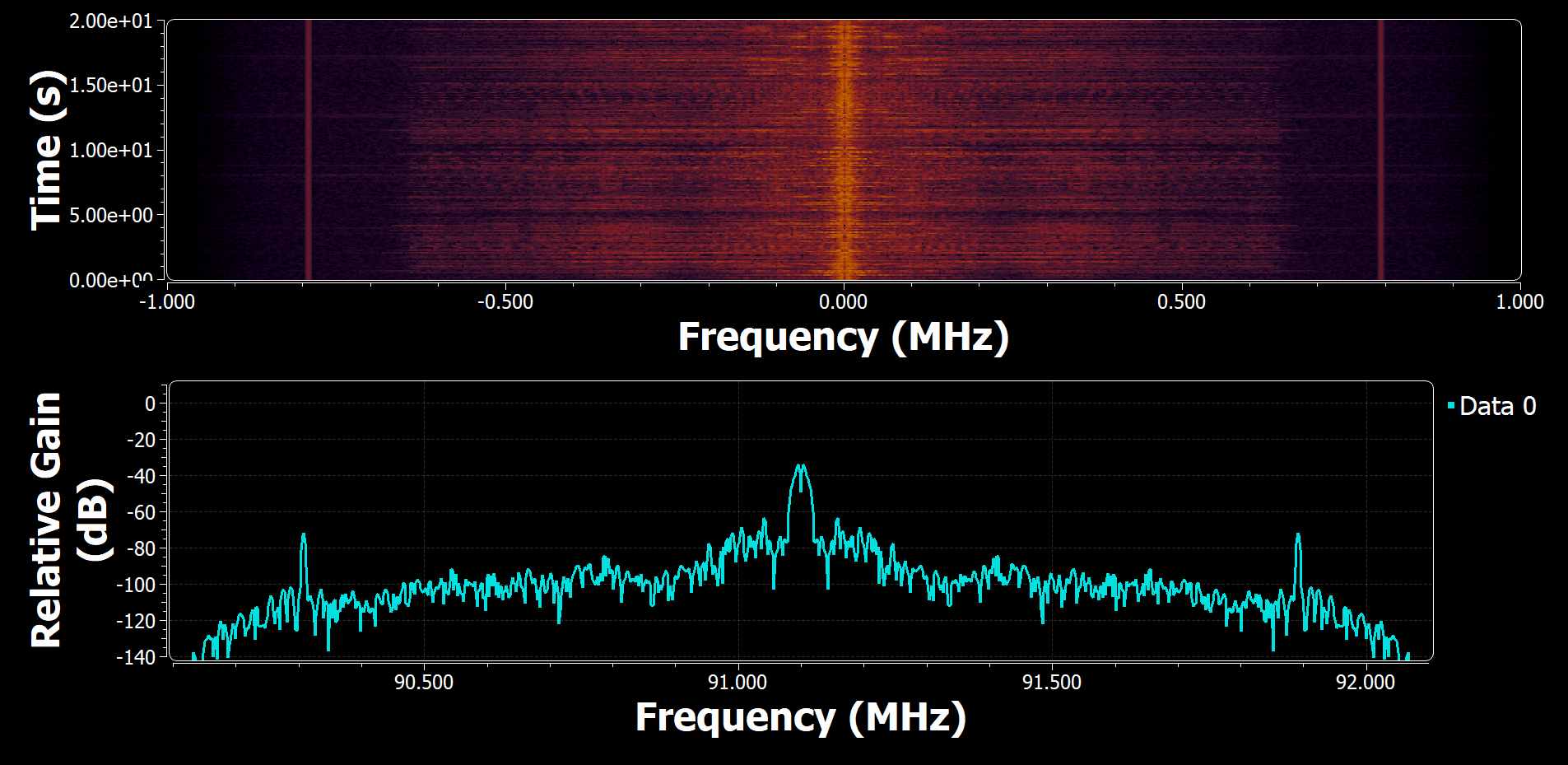Frequency Modulation and Demodulation
In this GNU Radio flowgraph, students create an FM receiver that captures and demodulates frequency-modulated (FM) signals using an RTL-SDR. FM works by varying the frequency of the carrier signal in proportion to the audio information being transmitted, offering clear sound quality and resistance to interference. In the flowgraph, an RTL-SDR receives the FM signal, which is then passed through a series of blocks that demodulate it, converting the frequency changes back into the original audio signal. This demonstration helps students understand how FM radio works, from signal reception to audio reproduction, offering practical experience with real-world radio signals.





